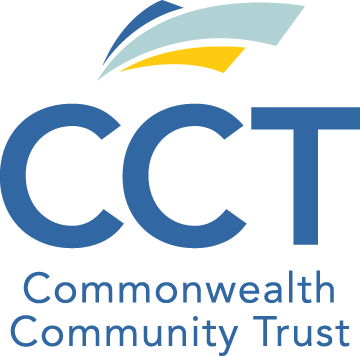Benefits of a Pooled Special Needs Trust for Clients with Special Needs
By Joanne Marcus, MSW, President and CEO of Commonwealth Community Trust (CCT)
This is the first article in a two-part series discussing Pooled Special Needs Trusts (PSNTs) and Medicare Set-Aside (MSA) accounts. This article will present an overview of PSNTs, their benefits, how to set up a PSNT for a client with special needs, and what to do for clients who also need an MSA.
Understanding PSNTs
A PSNT is administered by a nonprofit organization that manages and invests funds for individuals with special needs. Distributions are made from the trust to purchase goods and services that supplement public benefits and enhance the beneficiary’s quality of life. All beneficiaries must have a disability, but not all beneficiaries receive public benefits. In some instances, a PSNT is a good option for beneficiaries who simply cannot manage their own financial affairs. Funds placed in a PSNT are not countable resources and do not affect eligibility for means-tested benefits such as Supplemental Security Income (SSI) and Medicaid. Failure to consider a client’s means-tested benefits can result in a malpractice claim, a breach of fiduciary duty, or a dereliction of duty.
The following chart provides key information about Medicaid and SSI:
Supplemental Security Income (SSI) |
Medicaid |
| A monthly monetary allowance that is intended to pay for food and shelter (currently $783/month) | Federal health insurance program Administered by the states Some states have different eligibility requirements |
| Pays benefits to disabled adults and children who have limited income and resources | Pays benefits to the aged, blind, and/or disabled and impoverished |
| Adults are eligible if · They are disabled · Have no more than $2,000 in countable reosources* AND · Are below 133% of the federal poverty income level |
Adults are eligible if · They are disabled · Have no more than $2,000 in countable resources AND · Are below 133% of the federal poverty income level |
Clients may receive SSI, Medicaid, Medicare, Social Security Disability Insurance (SSDI), or a combination of benefits. The important consideration is that the individual has a disability. The following chart describing SSA’s definition of disability can be used as a guide:
ADULT |
MINOR (under 18) |
| The individual must be unable to engage in any substantial gainful activity (SGA) by reason of any medically determinable physical or mental impairment(s) which can be expected to result in death, or which has lasted or can be expected to last for a continuous period of not less than 12 months. | The individual must have a medically determinable physical or mental impairment or combination of impairments that causes marked and severe functional limitations, and that can be expected to cause death or that has lasted or can be expected to last for a continuous period of not less than 12 months. |
Any adult or minor who is blind is considered disabled for purposes of the SSA.
The following describes two ways in which PSNTs are utilized:
- First-Party PSNT – established with the beneficiary’s own funds from a personal injury award, workers’ compensation claim, inheritance, savings, or Social Security back payment. The trust is irrevocable and is used for the sole benefit of the disabled individual.
- Medicare Set-Aside (MSA) First-Party PSNT- a PSNT account with an MSA nested within. Established with funds from a workers’ compensation claim or liability lawsuit, the PSNT account transfers the allocated amount to an MSA provider, but retains ownership of the MSA account. These accounts should be considered when a client is dual eligible for both Medicaid and Medicare (or reasonably expected to receive Medicare in the near future) to meet the requirements of the “Secondary Payor” regulations governing Medicare recipients and also the rules for public benefits entitlement.
How Pooled Funds are Managed and Invested
Trust funds are “pooled” together for investment purposes, offering lower administrative fees and the potential for greater growth opportunity. Individual sub-accounts are maintained for each beneficiary, and all earnings based on a beneficiary’s share of the principal are reinvested into each sub-account. The beneficiary, or the beneficiary’s advocate, should have access to account information online or via financial statements sent on a regular schedule. PSNTs serve beneficiaries of varying account sizes from modest settlements to those of more substantial amounts. Funding can be a lump-sum or part of a structured settlement. It is not unusual for a bank or other financial institution to require a minimum of $350,000 to $500,000 to fund a trust. A nonprofit organization, on the other hand, may only require a minimum of $5,000 to fund a PSNT.
Setting Up a PSNT
Each grantor joins the pooled trust and agrees to the terms of the Master Trust Agreement by completing a Joinder Agreement, the legal document to join the PSNT. The Master Trust Agreement allows the nonprofit organization to administer the pooled trust and sets out the terms of that administration.
To serve clients properly, trust administrators have the expertise to make disbursement decisions and understand the rules set forth by the Social Security Administration (SSA) and Medicaid offices in each state. Disbursements from the trust are for the sole benefit of the beneficiary. The following are examples of what a PSNT can be used for:
- Medication and devices
- Assistive technology
- Home modifications, repairs, and upkeep
- Transportation
- Education expenses
- Caregiver expenses
- Pre-need burial and funeral expenses
Remainder Policy
Funds remaining in the account, upon the death of a beneficiary who received Medicaid, are subject to repayment to the state(s) for medical bills paid during the beneficiary’s lifetime. Federal law allows the nonprofit organization to retain the remainder for its charitable purposes in lieu of this repayment, but not all do. Some only retain in the instance that successor beneficiaries would not receive any remainder, and some retain all. Since the policies of individual PSNTs differ, it is important to check with each one to understand its remainder policy completely.
Structured Settlements
Weaving a structured settlement into a PSNT provides tax advantages and future financial security for the beneficiary. The structure can be funded by the defendant’s insurance company, but most companies assign that liability by purchasing annuities to make the payments. Assignments must be done pursuant to IRS Code Section 130 to “qualify,” and these qualified assignments, which are irrevocable, must be done at the time of settlement.
Annuity payments should be made payable to a PSNT and not to the beneficiary as that can cause ineligibility for benefits during the period of the annuity payments. The contingent or successor payee should also be the PSNT to satisfy the Medicaid repayment requirement. A commutation clause which provides for a lump-sum payment to the SNT at the beneficiary’s death should be included as part of the annuity contract. Receiving the commuted value of the remainder allows for orderly administration of the trust including timely repayment to states and immediate payment to successor beneficiaries of remaining assets.
Summary
Setting up a PSNT can alleviate stress by providing individuals with a cost-effective framework for money management. The second article of this two-part series will explore the advantages of nesting an MSA account inside a First-Party PSNT.
Dan, Brother and Advocate of a CCT Beneficiary
"CCT has been a blessing to our family. CCT has provided a sense of order, organization, trust, and leadership in helping to provide and protect the well-being of my younger sister. I would recommend CCT to anyone, and I already have." — Dan, Brother and Advocate of a CCT Beneficiary

Dustin, CCT Beneficiary
"I have had nothing but exceptional service from this company, they take their time to help with my needs and make sure I have what I need." — Dustin, Beneficiary of CCT
Cathy, CCT Beneficiary
"With the help of CCT I was able to purchase my Dream vehicle. Emily at CCT was/is a HUGE help! It was a very smooth transaction." — Cathy, Beneficiary of CCT
Grandmother of Beneficiary Kobe
"CCT made getting the wheelchair equip van we so much needed for our grandson the easiest purchase ever. Thank you CCT!!!" — Grandmother of Beneficiary Kobe
Rhonda, Mother and Advocate of a CCT Beneficiary
"CCT has been amazing. Very helpful with guiding us through this process." — Rhonda, Mother and Advocate of a CCT Beneficiary
Nancy, Grandmother and Advocate of a CCT Beneficiary
"CCT has been wonderful in serving the financial needs of my grandson. They are always prompt in answering questions and suggesting how we can make something happen for him. He just turned 18 this year and we still plan on using this service." — Nancy, Grandmother and Advocate of a CCT Beneficiary
Dan, Brother and Advocate of a CCT Beneficiary
"CCT has been a blessing to our family. CCT has provided a sense of order, organization, trust, and leadership in helping to provide and protect the well-being of my younger sister. I would recommend CCT to anyone, and I already have." — Dan, Brother and Advocate of a CCT Beneficiary
Dustin, CCT Beneficiary
"I have had nothing but exceptional service from this company, they take their time to help with my needs and make sure I have what I need." — Dustin, Beneficiary of CCT
CCT
Trusts
Professionals
Clients

*Disclaimer Statement: CCT is not a chartered bank or trust company, or depository institution. It is not authorized to accept deposits or trust accounts and is not licensed or regulated by any state or federal banking authority.
All Rights Reserved | Commonwealth Community Trust


